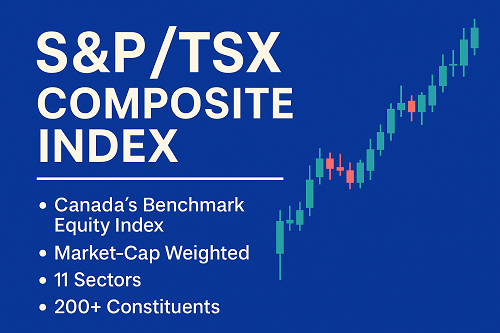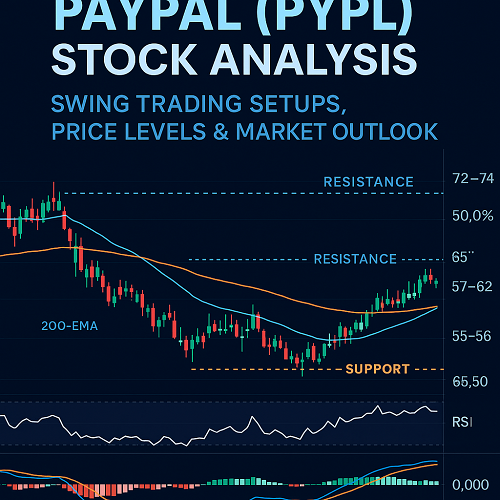If you’re looking to buy stocks online, you should know that buying stocks is one of the most popular and accessible ways to build wealth over time. While the concept is simple — owning fractional ownership in public companies — doing it well requires knowledge, discipline, and strategy.
This guide walks you through everything from choosing the right broker to placing orders, managing risk, and optimizing for tax efficiency. Whether you’re a first-time investor or an advanced trader, you’ll find high-value insights here that go far beyond what typical brokerage pages offer.
Why Buy Stocks? Benefits & Risks
Benefits
- Capital appreciation: Well-chosen stocks can grow substantially over time, outpacing inflation.
- Income via dividends: Many companies distribute dividends, creating a stream of passive income.
- Liquidity and tradability: Stocks trade continually on exchanges, enabling entry and exit flexibility.
- Ownership & voting rights: Shareholders may have representation in company decisions.
- Diversification opportunities: You can spread exposure across sectors, geographies, or themes.
Risks
- Volatility: Prices can swing sharply, sometimes in short time frames.
- Company-specific risk: Poor management, competition, or regulation can drastically affect performance.
- Market risk: General macro shocks, interest rate changes, or recessions can hit all stocks.
- Liquidity issues: Smaller-cap stocks may suffer from low trading volume.
- Behavioral mistakes: Overtrading, chasing momentum, or panic selling can hurt returns.
A balanced approach recognizes both upside and downside risks and integrates robust risk controls.
Types of Stocks You Can Buy
| Type | Description | Use Case / Pros & Cons |
|---|---|---|
| Large-cap & mega-cap | Established, high-market-cap companies | Stable, lower volatility, reliable dividends |
| Mid-cap | Growing companies bridging small and large | Higher growth potential, moderate risk |
| Small-cap / micro-cap | Emerging or niche firms | High upside but high risk / volatility |
| Growth stocks | Companies expected to grow revenue/profits rapidly | Usually reinvest profits; lower dividends |
| Value stocks | Undervalued relative to fundamentals | May deliver value “reversion” gains |
| Dividend / income stocks | Focus on paying consistent dividends | Suitable for income-focused investors |
| Sector / thematic stocks | E.g. biotech, cleantech, fintech | Allows thematic bets but comes with concentration risk |
| Foreign / ADRs | Stocks from non-U.S. markets, traded in U.S. markets via ADRs | Access to international growth, but currency / regulatory risk |
Choosing the Right Brokerage
When selecting a brokerage to buy stocks, consider these pillars:
Costs & Commissions
- Zero-commission trading: Many U.S. brokerages now offer $0 trades for U.S. equities (with caveats).
- Hidden fees: Check for fees on order routing, exchange fees, margin interest, inactivity fees.
- Options fees or contract charges: If you plan to use options, these matter.
Platform Features & Tools
- Order types & execution quality: Ability to place limit, stop, trailing stop, etc., with good routing.
- Research & data: Fundamental metrics, analyst reports, stock screeners.
- Mobile & desktop apps: Speed, usability, charting, alerts.
- Automation / APIs: For algorithmic or advanced traders.
- Customer support & reliability: Execution uptime, platform stability.
Access to Markets & Instruments
- Domestic vs. international stocks
- OTC / pink sheet access
- Fractional shares / DRIPs (Dividend Reinvestment Plans)
- Margin accounts, shorting, options
Regulation & Safety
- Ensure the broker is regulated (e.g. FINRA, SEC, SIPC protections in U.S.).
- Validate account security, encryption, two-factor authentication.
Reputation & Reliability
- Review user reviews, downtime history, speed issues.
- Understand how the broker routes orders (payment for order flow, internalization, etc.).
A good broker meets your cost, tool, and market access needs while handling order execution cleanly and transparently.
Step-by-Step: How to Place a Stock Trade
- Open an account — complete KYC, deposit funds
- Choose your stock or ticker — via search or screener
- Decide on order size — how many shares or what dollar amount
- Pick order type — market, limit, stop, etc.
- Select time-in-force — day order, good-till-canceled (GTC), etc.
- Place the order — ensure it is routed and accepted
- Monitor fill status — partial fills, execution, confirmation
- Manage the position — set stop loss, take profit, adjust or exit
Let’s illustrate with an example:
You want to buy shares of XYZ at no more than $100 per share.
- Place a limit order at $100, quantity 50 shares
- Time-in-force: day order
- Monitor until the order is filled or canceled
- Once you hold the shares, set a stop-loss at $90 and optionally a trailing stop
Understanding each order parameter is critical to prevent surprises.
Stock Selection Strategies
Stock picking is both art and science. Here are the major frameworks:
Fundamental Analysis
- Financial statements: income, balance sheet, cash flows
- Ratios: P/E, P/B, ROE, ROIC, debt ratios
- Growth trends: revenue, margins, earnings per share
- Competitive moats / business model
- Management quality
- Industry & macro tailwinds
- Catalysts & risks
This is ideal for long-term investors and value-oriented strategies.
Technical Analysis
- Price patterns: support, resistance, trendlines
- Indicators: moving averages, RSI, MACD, stochastic
- Volume analysis, momentum oscillators
- Chart patterns: flags, triangles, head & shoulders
- Breakouts and mean-reversion setups
Used for timing entries and exits, especially in shorter-term trading.
Quantitative / Factor Investing
- Factor models: momentum, value, size, volatility
- Screening & ranking: combining multiple signals
- Backtesting strategies: simulate historic performance
- Risk-adjusted metrics: Sharpe, Sortino, alpha, beta
Combines math and statistics to build more systematic strategies.
Hybrid / Blended Approach
Many successful investors combine elements: use fundamental filters to narrow candidates, then apply technical or quant overlays for timing.
Order Types & Execution Strategies
Understanding advanced order types can give you an edge:
| Order Type | Use Case | Risk / Notes |
|---|---|---|
| Market Order | Quick execution at prevailing price | Slippage possible, especially in volatile or low-liquidity stocks |
| Limit Order | Specify the maximum price you’ll pay (or minimum you’ll accept to sell) | May not fill fully or at all |
| Stop Order | Becomes market order once a trigger price hits | Trigger may cause slippage |
| Stop-Limit Order | Upon trigger, becomes a limit order | If limit not met, order might not execute |
| Trailing Stop | Dynamically adjusts the stop price as the stock moves in your favor | Locks in gains while allowing run-ups |
| Fill or Kill / All or None | Execute entirely or cancel | Useful for block orders |
| Iceberg Orders | Hide large order size by breaking it into smaller blocks | Useful in institutional trading |
Also, order routing and smart routing (across exchanges or dark pools) affect execution quality. Brokers often use algorithms to optimize fills while minimizing slippage and adverse selection.
Risk Management & Position Sizing
Even the best stock picks can go wrong without proper risk control:
Position Sizing
- Use a fixed-percentage or fixed-dollar risk model.
- A common rule: risk at most 1–2% of portfolio capital per trade.
- Example: on a $50,000 portfolio, risk $500 (1%) per trade.
Stop Loss & Risk:Reward
- Define stop-loss levels in advance
- Use take-profit levels or trailing stops
- Aim for risk:reward ratios like 1:2, 1:3 or higher
Diversification & Correlation
- Don’t overweight a single stock or sector
- Use low-correlation assets to buffer volatility
- Consider hedging (options, inverse ETFs) in extreme cases
Portfolio Drawdown Controls
- Set a maximum drawdown threshold (e.g. 10–15%)
- If portfolio falls below that, reduce aggression or pause trading
- Use stop-loss programs (daily, weekly limits)
Volatility-adjusted Sizing
- Adjust position size based on volatility (ATR, standard deviation)
- More volatile stocks → smaller size
Proper risk management prevents one bad trade from jeopardizing your entire portfolio.
Taxes, Fees & Costs to Watch
Transaction Costs & Fees
- Broker commissions, exchange and clearing fees
- Bid-ask spreads
- Margin interest, if borrowed
- Payment for order flow (may disadvantage execution)
- Service or inactivity fees
Taxes (U.S. context; local rules may differ)
- Short-term capital gains (held < 1 year): taxed at ordinary income rates
- Long-term capital gains (held ≥ 1 year): lower preferential tax rate
- Dividends: qualified vs. non-qualified
- Wash sale rules: disallowing losses if re-buying within 30 days
- State / local taxes, where applicable
- Tax harvesting: offset gains with losses
International or cross-border investors may have withholding taxes, double taxation treaties, or additional compliance obligations (e.g. FATCA, KYC, etc.).
Advanced Techniques (Shorting, Options, Margin)
Short Selling
- Borrow shares and sell them, hoping the price declines
- Requires margin account, borrowing fees, unlimited risk
- Use stop losses / buy-to-cover orders
Trading on Margin
- Leverage your capital by borrowing from broker
- Multiplies both upside and downside
- Watch maintenance margin, margin calls, interest rates
Options Strategies on Stocks
- Covered calls: hold stock + sell call
- Protective puts: buying put as downside protection
- Spreads, straddles, strangles, butterflies: for directional or volatility trades
- Options add dimension (leverage, limited risk) but require deep understanding
These techniques are best used only after mastering basic stock trading and risk management.
Building & Managing a Portfolio
Strategic Allocation
- Decide your mix: growth vs income vs value
- Choose sector weights, geographic exposures
Rebalancing & Drift Control
- Periodically rebalance to maintain your target allocation
- Consider tax implications for trades
Monitoring & Review
- Track key metrics: performance, drawdowns, correlations
- Review & prune underperformers
- Adjust as macro conditions or your goals change
Scaling Up Over Time
- As the portfolio grows, use more advanced techniques (e.g. options, hedges)
- Layer in alternative assets to reduce equity-only risk
Behavioral Biases & Trading Psychology
Emotions often hurt more than market moves. Key biases to manage:
- Loss aversion: holding losers too long
- Overconfidence / hubris: risking too much
- Anchoring: fixating on a prior price
- Herding: following crowd impulses
- Recency bias: overemphasis on latest moves
- Confirmation bias: seeking only supporting evidence
Tips to manage psychology:
- Create and commit to a written trading plan
- Limit screen time & news exposure
- Automate entries/exits where possible
- Use journaling & post-trade review
- Take scheduled breaks
Case Studies & Examples
Example 1: Momentum Trade in a Growth Stock
- A stock consolidates and breaks out above resistance
- Use a volume confirmation and technical indicator (e.g. RSI > 70)
- Enter with stop just below breakout, target measured move
- Risk:reward target 1:3
Example 2: Dividend Growth Strategy
- Screen for stocks with 5+ years of consistent dividend growth, payout < 60%
- Combine with value filter (P/E below industry median)
- Hold long term, reinvest dividends
Example 3: Hedged Portfolio
- Core holdings in blue-chip stocks
- Use protective puts to hedge downside during volatile periods
- Sell covered calls on portions to generate extra income
Applying strategies in live or paper trading builds confidence and insight.
Common Mistakes & How to Avoid Them
- Chasing “hot” stocks without due diligence
- Overtrading—too many positions, too frequent turnover
- Ignoring position sizing and risking large percentages
- Failing to plan entries and exits in advance
- Letting losses run without stops
- Emotional trading (revenge trades, panic exits)
- Neglecting diversification
- Overusing leverage before mastering basics
- Ignoring taxes, fees, or slippage
Avoidance of these “sins” often separates consistent traders from the rest.
Summary & Action Plan
Key Takeaways
- Choose a broker that fits your cost, tool, and market access needs
- Use well-defined strategies (fundamental, technical, quant)
- Master order types and execution
- Control risk via position sizing and stops
- Be aware of costs and taxes
- Only use advanced techniques once fundamentals are solid
- Monitor portfolio, rebalance, and manage psychology
Suggested 30-Day Action Plan
| Week | Focus |
|---|---|
| 1 | Open brokerage, deposit funds, set up watchlist |
| 2 | Paper-trade a few strategies (momentum, dividend) |
| 3 | Execute small live trades with strict risk controls |
| 4 | Review, backtest outcomes, refine strategy, scale up gradually |
Once you’re gaining confidence with smaller allocations, you can expand and evolve your approach.
Further Reading, Tools & Resources
- Books: The Intelligent Investor (Graham), A Random Walk Down Wall Street (Malkiel), Market Wizards (Schwager)
- Tools & platforms: TradingView, Bloomberg, Reuters Eikon, QuantConnect, Stock screeners
- Blogs & research: Seeking Alpha, Morningstar, Quantitative blogs
- Communities & forums: Elite trader communities, Reddit / r/algotrading, etc.





 XAUT-USD
XAUT-USD  AMD
AMD  MARA
MARA  SHOP
SHOP  BULL
BULL  CL=F
CL=F